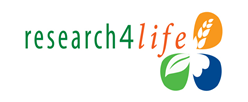Pathogenesis and Biomarkers of Metabolic Syndrome
DOI:
https://doi.org/10.15330/jpnu.8.4.7-19Keywords:
metabolic syndrome, visceral fat, inflammation, oxidative stress, insulin resistanceAbstract
Metabolic syndrome (MetS) is a pathologic multifaceted condition characterized by elevated triacylglycerides, decreased high density lipoproteins, insulin resistance, increased blood pressure and fasting glucose. Together these abnormalities increase a risk of cardiovascular diseases and type 2 diabetes mellitus. Overnutrition and sedentary lifestyle followed by overweight and obesity are the main contributing factors to MetS development. The pathogenesis of MetS is very complex and not fully elucidated. The studies support the concept of oxidant/antioxidant imbalance and low-grade inflammation playing main roles in its manifestations. Diagnosis with MetS and the development of MetS complications can be detected and monitored via specific serum biomarkers. In this paper, we describe classical metabolic, hormonal and pro-/anti-inflammatory markers which are the most frequently used for MetS diagnostic and research. They include serum lipid profile (triacylglycerides, total cholesterol, low and high density lipoproteins), blood pressure, fasting glucose and HOMA-IR index, levels of anti-inflammatory adiponectin, pro-inflammatory C-reactive protein and cytokines (TNF-α, IL-1β, IL-6, etc.). We also analyze advantages of additional criteria such as levels of oxidative damages, appetite hormones (leptin, ghrelin), apolipoproteins and oxylipins, the composition of gut microbiota and levels of microbiome-derived metabolites, the ratios between different parameters as helpful biomarkers of MetS and concomitant cardiovascular diseases.










